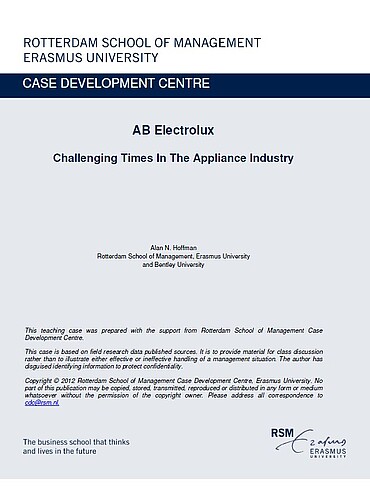Citation Note
Based on published sources; 23 pages.
Follow the 'handle' link to access the Case Study on RePub.
For EUR staff members: the Teaching Note is available on request, you can contact us at rsm.nl/cdc/contact/
For external users: follow the link to purchase the Case Study and the Teaching Note.
description
Low-capacity utilization and little product differentiation reduced Electrolux’s competitiveness against low-price rivals during the economic recession. How can Electrolux identify and strengthen its weaker strategic business units in order to maintain its competitive advantage?
Abstract
AB Electrolux, the world’s second largest consumer and professional appliances maker, offers customer-centered, environmentally friendly premium products. Although Electrolux has differentiated itself as a prospector and prided its business on innovation and incorporating cutting-edge technology, it has been unable to maintain sales of high-profit margin appliances in major European markets and China since the global economic recession. Low-capacity utilization is a major issue that Electrolux must resolve in order to compete on price against its low-priced competitors. With multiple brands and hundreds of products, the company furthermore finds it hard to differentiate itself from its competitors. How can Electrolux identify and strengthen its weaker strategic business units in order to maintain its competitive advantage?
usage
This case is written in a way that complex strategic decisions can easily be analyzed during limited classroom discussion time. Professors have commented that the case has worked well in their classrooms.
